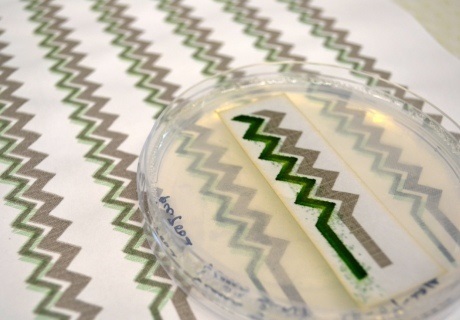Printable bacteria used for low-energy biosensors
UK researchers have used bacteria as a solar-harvesting ink to print paper-based disposable biosensors.

(Credit: Imperial College London)
The biosensors are powered by Cyanobacteria, photosynthetic micro-organisms that produce small amounts of energy over a period of around 100 hours. Using an inkjet printer, the researchers created precise patterns of the bacteria on to paper, alongside patterns of electrically conductive carbon nanotubes.
The resulting paper sensors could be used to create wallpaper for short-term environmental monitoring or disposable medical devices for patients with conditions such as diabetes. Published in the journal Nature Communications, the work was carried out by a multidisciplinary team from Imperial College London, the University of Cambridge and Central Saint Martins.
“Imagine a paper-based, disposable environmental sensor disguised as wallpaper, which could monitor air quality in the home,” said Dr Marin Sawa, a co-author from the Department of Chemical Engineering at Imperial College London.
“When it has done its job it could be removed and left to biodegrade in the garden without any impact on the environment.”
Register now to continue reading
Thanks for visiting The Engineer. You’ve now reached your monthly limit of news stories. Register for free to unlock unlimited access to all of our news coverage, as well as premium content including opinion, in-depth features and special reports.
Benefits of registering
-
In-depth insights and coverage of key emerging trends
-
Unrestricted access to special reports throughout the year
-
Daily technology news delivered straight to your inbox










Water Sector Talent Exodus Could Cripple The Sector
Maybe if things are essential for the running of a country and we want to pay a fair price we should be running these utilities on a not for profit...